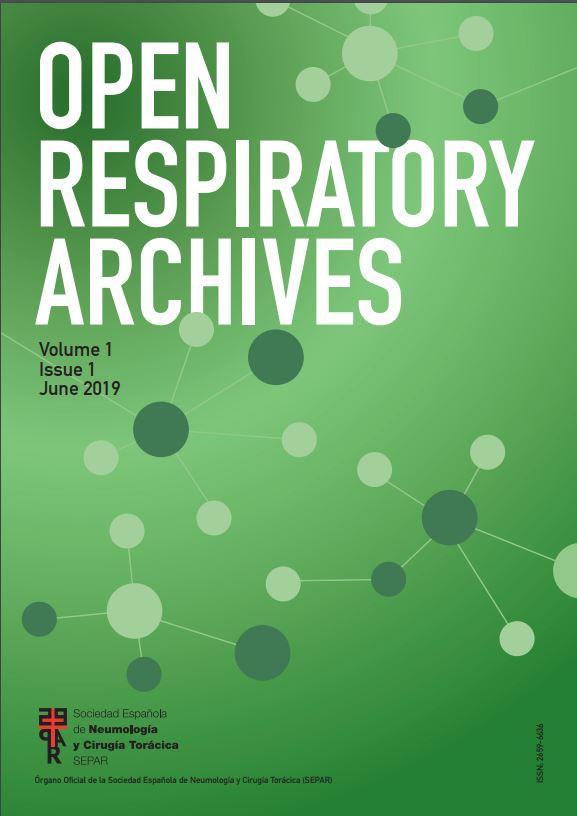We present the case of a 58-year-old male who presented to the Emergency Department (ED) with a painful mass on the left flank (Fig. 1A), persisting for 10 days. He was an ex-smoker (25 pack-years, ceased 10 years ago) and he had occupational exposure in a foundry, with no recent travel, animal contacts, or relevant epidemiological exposures. Initial management in the ED included discharge with a 7-day course of amoxicillin and scheduling for an ultrasound and dermatology consultation.
Clinical images. (A) An erythematous, warm, hard (non-fluctuant), and painful soft tissue lesion adjacent to the left 8th and 9th posterior rib arches. (B) Contrast-enhanced chest CT showing two nodules in the apical segment of the right lower lobe, the largest measuring 17mm in maximum nodular diameter e. (C) PET-CT showing a hypermetabolic lesion with a non-metabolic center (likely related to central necrosis) and an SUVmax of 25.4.
Nine days later, he returned with persistent symptoms and a fever of 39°C. Laboratory workup revealed leukocytosis (13,300cells/μL with 10,000 neutrophils) and elevated C reactive protein (CRP, 8.5mg/dL). Blood cultures and a chest X-ray were performed, with no significant findings, and he was prescribed a 7-day course of clindamycin. Next day, he was valorated by the Thoracic Surgery Department and admitted onward. A thoracic CT scan identified a left costal lesion (80mm×37mm×70mm) and a right lower lobe lesion (Fig. 1B). A biopsy was performed, with negative microbiology and intravenous amoxicillin–clavulanic acid was administered for 3 days, followed by oral continuation. The patient was discharged with a PET-CT, MRI and bronchoscopy scheduled.
Ten days later, the patient returned with fever, chills, and a persistent costal mass. MRI revealed a left costal mass without pleural infiltration, leading to another hospitalization. Physical examination showed the large, painful, erythematous mass adherent to deep planes on the left flank (Fig. 1A). The Infectious Diseases Unit was consulted and empiric piperacillin-tazobactam and vancomycin was initiated, followed by surgical debridement. Microbiological analysis identified Nocardiaarthritidis, leading to a prompt switch to intravenous imipenem and cotrimoxazol. PET-CT (Fig. 1C) and a head CT showed no other distant involvement. Directed therapy with ceftriaxone and cotrimoxazole was administered for three weeks, followed by oral cotrimoxazole, which was discontinued due to hepatotoxicity and myelotoxicity, and doxycycline was continued for six months, with clinical improvement and resolution of the lesions on follow-up imaging studies.
Nocardiosis is an opportunistic infection caused by environmental aerobic gram-positive bacteria of the genus Nocardia spp.1 The infection is predominantly seen in immunocompromised patients, though 18–45% of cases occur in immunocompetent individuals.2 It is primarily acquired through inhalation, with potential for direct skin inoculation.
Pulmonary presentation is most common, but skin and central nervous system (CNS) involvement can also occur. The onset of the pulmonary infection can be acute, subacute or chronic. The most common symptoms include productive cough (60–76%), high fever, chills and sweating (62.8%), pleural involvement (10–25%) and weight loss (16%).3,4 No radiographic features are sufficiently distinctive to establish a diagnosis and it includes pulmonary airspace consolidation with or without air bronchograms, nodules, abscess or cavitations, usually affecting the right upper lobe (53%).3
Disseminated nocardiosis is defined by involvement of at least two non-contiguous organs.5 Routine thoracic CT and contrast-enhanced brain imaging are recommended except in immunocompetent patients with only primary cutaneous lesions or keratitis6 to rule out involvement in these areas, as CNS involvement is often asymptomatic.
For diagnosing, it is essential to inform the microbiology lab of the suspicion to ensure meticulous examination and appropriate culture media, and it is advisable to manage these cases within multidisciplinary teams. Nocardia spp. infection treatment involves antibiotic therapy and sometimes surgical debridement.4,7 Mild to moderate localized pulmonary infections may be treated with monotherapy with cotrimoxazole for 3–6 months,8,9 but severe or disseminated cases require at least two intravenous drugs, including, in addition to cotrimoxazole, options such as amikacin, imipenem, linezolid, or a third-generation cephalosporin, tailored based on antibiogram results.10,11 Intravenous treatment should last 2–6 weeks, followed by one-drug oral regimen for 6–12 months.2,6 The oral treatment of choice is cotrimoxazole, with tetracyclines or amoxicillin–clavulanate as alternative options depending on susceptibility.6,11 For patients with irreversible immunosuppression, indefinite secondary prophylaxis with cotrimoxazole may be recommended.3,6
Due to the prolonged treatments, caution is required regarding potential drug interactions, adverse effects, and drug synergies and antagonistic effects,6 making close clinical, laboratory, and imaging follow-up to help prevent relapses and to detect any adverse effects.
In our clinical case, initial patient visits and complementary tests aimed at investigating a potential tumor condition, as it is common for nocardiosis to mimic many conditions like pneumonia, tuberculosis, and carcinoma or pulmonary abscesses of other etiologies.4 Thus, we emphasize the importance of maintaining a high index of clinical suspicion for accurate diagnosis and timely treatment of these patients. It is worth noting that, nocardiosis should be considered in the differential diagnosis of pneumonias unresponsive to conventional antibiotics, particularly those with multiple, cavitary, or pseudotumoral presentations, as well as cerebral or multifocal abscesses, regardless of the patient's immune status.12
Informed consentThe authors declare that they have obtained the patient's informed consent in accordance with the ethical guidelines of the institution. This document is held by the corresponding author.
FundingThis research has not received any specific grants from agencies in the public, commercial or for-profit sectors.
Authors’ contributionsAll authors have made substantial contributions in each of the following aspects: (1) conception or design of the work, acquisition, analysis or interpretation of the data used in the manuscript, (2) drafting and critical revision of the work, providing important intellectual content and (3) final approval of the version to be published.
Conflicts of interestThe authors declare that they have no conflicts of interest in the preparation of this article.







